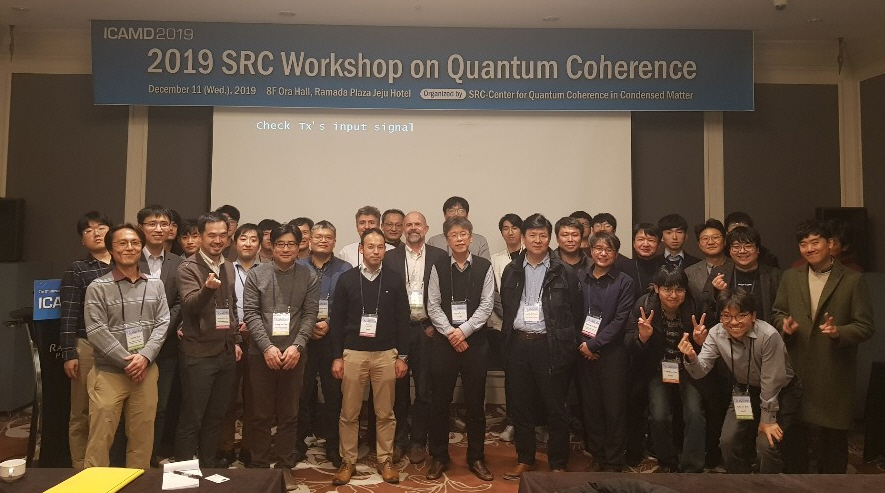聚集相量子结核研究中心旨在通过开发控制固体中电子的量子力学波分数的技术,研究高纯度二维电子系统、半导体一维纳米线等不同系统的量子匹配现象。电子的量子匹配是电子量子力学波引起的现象的统称,是新发现的聚集现象的基本原因,包括量子纠缠、安妮昂、量子位、多体现象和多体相、非局部相位效应和纳米尺度传导现象。量子电元件、量子信息元件、量子计算机等将成为下一代半导体器件的基本原则。
研究中心将开展电子波波测量与控制量子力学极限技术开发、新型准粒子探索、量子电子传输研究、多体现象研究技术开发、新一代量子信息器件和量子计算机源技术积累等工作,开拓新的学科领域,培养高端研究人才,为未来社会做好准备。
研究中心会组织很多活动,来帮助研究人员的研究开发,类似的活动主题有基于NdNiO3(NNO)的一阶金属绝缘体跃迁(MIT)或反铁磁性YCrO3(YCO)与重金属之间的界面现象的过渡金属氧化物器件。还有阐明机械剥落的α-RuCl3以及α-RuCl3石墨烯的电子和磁性,如何在界面处设计和工程原子尺度重建,以印记新的功能等等。

The Concentrated Phase Quantum Nodule Research Center aims to study the quantum matching phenomenon of different systems such as high-purity two-dimensional electronic systems and semiconductor one-dimensional nanowires by developing technologies to control the quantum mechanical wave fraction of electrons in solids. Quantum matching of electrons is a general term for phenomena caused by electron quantum mechanical waves, and is the fundamental cause of newly discovered aggregation phenomena, including quantum entanglement, anion, qubits, many-body phenomena and multibody phases, non-local phase effects, and nanoscale conduction phenomena. Quantum electrical components, quantum information components, quantum computers, etc. will become the basic principles of the next generation of semiconductor devices.
The research center will carry out the development of quantum mechanical limit technology for electron wave measurement and control, the exploration of new quasiparticles, the research of quantum electron transmission, the development of multi-body phenomenon research technology, the accumulation of a new generation of quantum information devices and quantum computer source technology, etc., open up new disciplines, cultivate high-end research talents, and prepare for the future society.
The center organizes a number of activities to help researchers in their research and development, similar topics such as transition metal oxide devices based on the first-order metal insulator transition (MIT) of NdNiO3 (NNO) or the interface between antiferromagnetic YCrO3 (YCO) and heavy metals. There are also elucidating the electrons and magnetism of mechanically peeled α-RuCl3 and α-RuCl3 graphene, how to design and engineer atomic-scale reconstruction at interfaces to imprint new functions, and more.